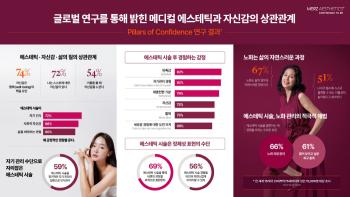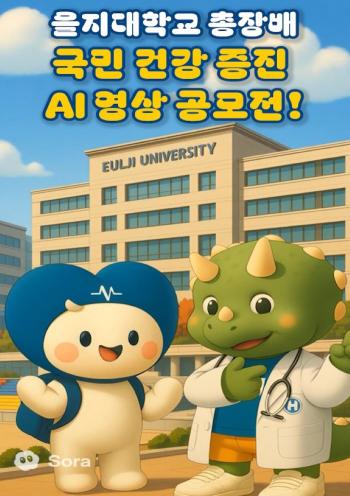Non-sealable rotator cuff rupture, treatment effects and risk of complications vary depending on surgical methods
Sep 19, 2025
Kim (69), who lives in Gyeonggi-do Province, suffered great discomfort in his daily life due to shoulder pain that has persisted for many years. Whenever I raised my arm or turned back, I complained of severe pain, so I visited a nearby hospital, and was diagnosed with 'unsealed rotator cuff rupture'. Afterwards, he underwent a complete hermetic surgery after muscle advancement (MA), but after surgery, his external rotation function was not restored, so he still experienced discomfort in his daily movements of dressing or brushing his hair. There was no improvement after 6 months of rehabilitation.
Afterwards, Kim underwent reoperation through Latissimus Dorsi Tendon Transfer (LDTT), and six months after the operation, he became much more comfortable in his daily life as he became free to turn his shoulders" expressed satisfaction.
Many of the patients suffering from shoulder pain are caused by rotator cuff rupture. Among them, if the degree of rupture is severe and suture is impossible, high-level surgery is required. However, depending on which surgical method you choose, the treatment outcome and the risk of complications vary greatly.
A research team led by Professor Noh Kyu-chul and Lee Yong-beom of orthopedic surgery at Hallym University's Sacred Heart Hospital has published the results of a meta-study comparing the therapeutic effects and the risk of complications of the typical surgical methods 'Gwangbae muscle tendon transfer' and 'Complete suture after muscle advance surgery' for patients with sutureless rotator cuff tear for the first time in the world.
The research team systematically compared the clinical results of 'Opatic muscle tendon transfer' and 'Complete suture after Muscle Advancement in patients with extensive rotator cuff rupture who could not suture. To this end, we meta-analyzed 24 papers and a total of 956 surgical cases listed in the world-renowned academic literature database in the field of medicine. As a result, both surgical methods had a positive effect on shoulder function recovery and pain improvement, but there were differences in external rotation function recovery, joint stability, and complication rate.
Lateral muscle tendon transfer showed superior results than muscle advancement in terms of restoring external rotation function. In addition, safety was better in the incidence of complications and reoperation rates. The overall incidence of complications was 18% for light dorsal tendon transfer, whereas 25.7% for muscle advancement. Repercussion and reoperation rates were also 8.9% and 20.8%, respectively, showing better performance of light dorsal tendon transfer.
On the other hand, complete encapsulation after muscle advancement showed strength in securing static stability of the joint. The acromiohuman distance (AHD), a major indicator of shoulder joint stability, increased by an average of 1.92 mm in the muscle advancement group, showing a statistically significant improvement over the light dorsal tendon transfer group (-0.19 mm).
Based on the results of this analysis, the research team emphasized that the surgical method should be selected by comprehensively considering the patient's age, muscle condition, degree of damage to the external rotation function, and the level of functional requirements. For patients who are older and have severe external rotational dysfunction, light dorsal tendon transfer may be a better option, and for patients who are relatively young and in good muscle condition, muscle advancement may be a better option.
Professor Noh Kyu-chul explained, "The key to rotator cuff rupture treatment lies in a customized treatment strategy that reflects the individual patient's anatomical characteristics and functional needs in a balanced way rather than the uniform priority of a specific surgical method.".
This study 'Comparison of Outcome Comparison of Arthroscopic Latissimus Dorsi Tendon Transfer and Muscle Advancement for Irrepellent Rotator Cuff Tear: A Systematic Review' was recently published in the international journal of surgery 'International Journal of Surgery (IF=10.1)'.
Afterwards, Kim underwent reoperation through Latissimus Dorsi Tendon Transfer (LDTT), and six months after the operation, he became much more comfortable in his daily life as he became free to turn his shoulders" expressed satisfaction.
Many of the patients suffering from shoulder pain are caused by rotator cuff rupture. Among them, if the degree of rupture is severe and suture is impossible, high-level surgery is required. However, depending on which surgical method you choose, the treatment outcome and the risk of complications vary greatly.
A research team led by Professor Noh Kyu-chul and Lee Yong-beom of orthopedic surgery at Hallym University's Sacred Heart Hospital has published the results of a meta-study comparing the therapeutic effects and the risk of complications of the typical surgical methods 'Gwangbae muscle tendon transfer' and 'Complete suture after muscle advance surgery' for patients with sutureless rotator cuff tear for the first time in the world.
The research team systematically compared the clinical results of 'Opatic muscle tendon transfer' and 'Complete suture after Muscle Advancement in patients with extensive rotator cuff rupture who could not suture. To this end, we meta-analyzed 24 papers and a total of 956 surgical cases listed in the world-renowned academic literature database in the field of medicine. As a result, both surgical methods had a positive effect on shoulder function recovery and pain improvement, but there were differences in external rotation function recovery, joint stability, and complication rate.
Lateral muscle tendon transfer showed superior results than muscle advancement in terms of restoring external rotation function. In addition, safety was better in the incidence of complications and reoperation rates. The overall incidence of complications was 18% for light dorsal tendon transfer, whereas 25.7% for muscle advancement. Repercussion and reoperation rates were also 8.9% and 20.8%, respectively, showing better performance of light dorsal tendon transfer.
On the other hand, complete encapsulation after muscle advancement showed strength in securing static stability of the joint. The acromiohuman distance (AHD), a major indicator of shoulder joint stability, increased by an average of 1.92 mm in the muscle advancement group, showing a statistically significant improvement over the light dorsal tendon transfer group (-0.19 mm).
Based on the results of this analysis, the research team emphasized that the surgical method should be selected by comprehensively considering the patient's age, muscle condition, degree of damage to the external rotation function, and the level of functional requirements. For patients who are older and have severe external rotational dysfunction, light dorsal tendon transfer may be a better option, and for patients who are relatively young and in good muscle condition, muscle advancement may be a better option.
Professor Noh Kyu-chul explained, "The key to rotator cuff rupture treatment lies in a customized treatment strategy that reflects the individual patient's anatomical characteristics and functional needs in a balanced way rather than the uniform priority of a specific surgical method.".
This study 'Comparison of Outcome Comparison of Arthroscopic Latissimus Dorsi Tendon Transfer and Muscle Advancement for Irrepellent Rotator Cuff Tear: A Systematic Review' was recently published in the international journal of surgery 'International Journal of Surgery (IF=10.1)'.
|
This article was translated by Naver AI translator.














